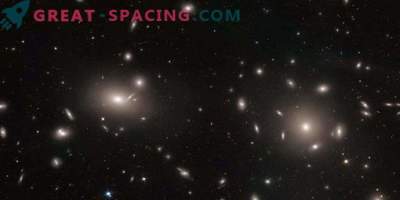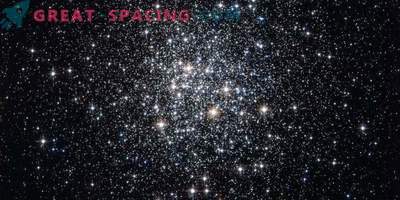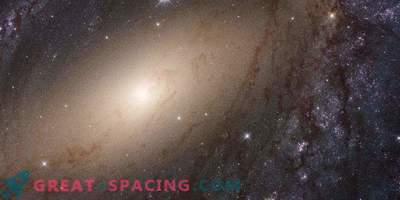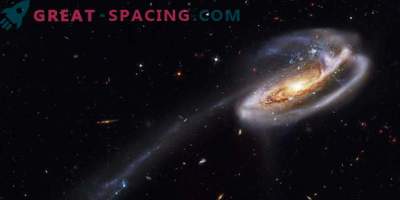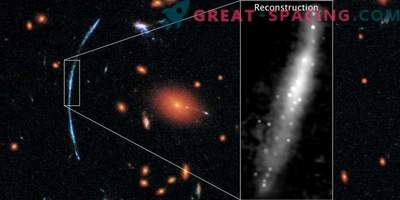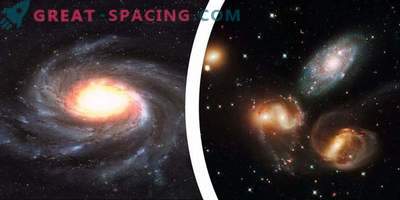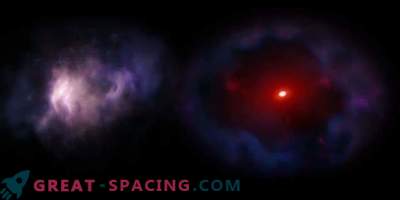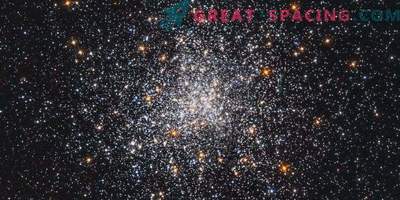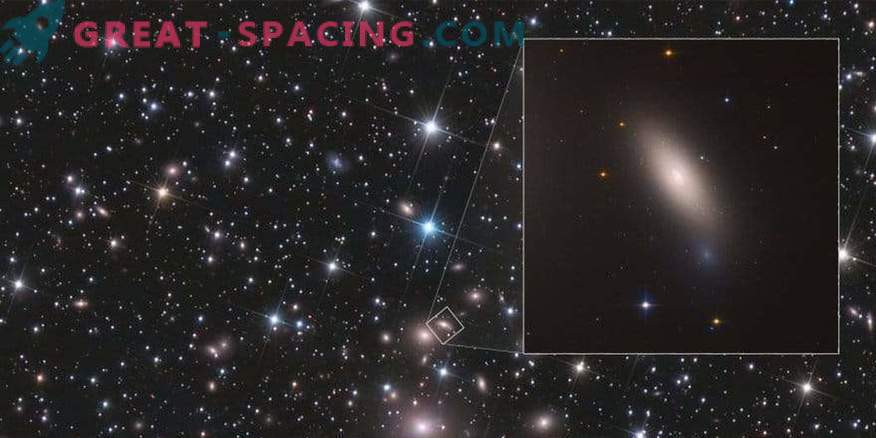
Top right: This is a snapshot of the NGC 1277 galaxy from the Hubble Space Telescope. It is unique in that it is considered a relic resembling galaxies from the early Universe. It consists of ancient stars that appeared 10 billion years ago. No hint of further starry birth. Such galaxies are called “red and dead” due to aging stars and the lack of a younger generation. The main sign of "arrested development" is the presence of globular clusters around. The absence of blue clusters suggests that NGC 1277 has never expanded, absorbing neighboring galaxies. Background image: The galaxy lives near the center of the Perseus cluster. This is more than 1,000 galaxies, 240 million light-years distant from us. NGC 1277 moves at a speed of 2 million miles per hour. Near the center of the intergalactic gas is so hot that it is not able to cool and form stars
Scientists used the Hubble Space Telescope to study an ancient relic galaxy near our home. This is a rare and odd collection of stars, in which there has been no change over the last 10 billion years. So you can literally look at what the ancient galaxies looked like. NGC 1277 began its existence actively, creating stars 1000 times faster than the modern Milky Way. But the process stopped when the stars grew older and became redder. Hubble had already observed such “red and dead” galaxies, but had never noticed them so closely.
Usually, early galaxies are incredibly far away and appear only as red dots in pictures. NGC 1277 provides a unique opportunity to view a close up view. Relic galaxy has twice the stellar volume than the Milky Way. But in size it reaches only 1/4 of our parameters.
It is believed that out of 1000 massive galaxies, only one is destined to become relic. The reference mark is the presence of ancient globular clusters. Usually massive galaxies have poor on metal (blue) and rich in metal (red) globular clusters. It is generally accepted that the reds create a galactic form, while the blues appear later when they absorb neighboring galaxies. NGC 1277 does not have blue.
Red clusters hint that the galaxy has not produced new stars for a long time. But the lack of blue tells us that NGC 1277 has never expanded. For you to understand, 180 blue and red globular clusters live in the Milky Way, because our home continues to absorb the neighboring territories. Galaxy NGC 1277 lives near the center of the Perseus cluster. There are 1000 galaxies, located 240 million light-years distant from us. Due to the displacement at a speed of 2 million miles per hour, the galaxy cannot merge with others or delay other stars. And the intergalactic gas near the center is so hot that it is not able to form stars.
Scientists set about searching for similar galaxies at Sloan Digital Sky Survey and found 50 massive candidates. NGC 1277 was identified as unique because it has a central black hole whose massiveness exceeds standards for galactic size. The future telescope of James Webb (starting in 2019) will measure the movement of the globular clusters in NGC 1277. With this, it will be possible to understand how much dark matter is in the primary galaxy.
